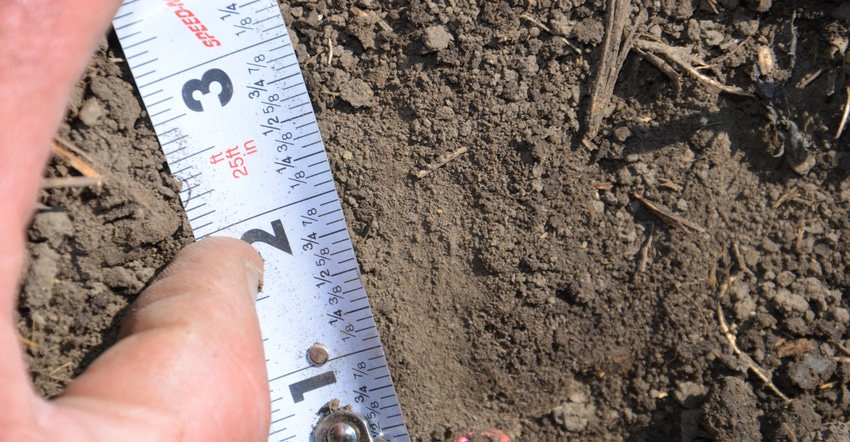
Ken Simpson, Morristown, Ind., sent me emails in early May detailing how soil temperature hit a low of 38 degrees F one morning, and was still in the low 40s at midmorning. Others have noted that afternoon readings moved into the mid-50s or higher.
“OK, Ken, how deep are you checking soil temperature?” I asked, thinking those lows were part of awfully big swings.
“About 2 inches. Why?” he replied.
“I think weather stations check it at 4 inches under sod,” I explained.
“Dang, Tom, I don’t plant my corn 4 inches deep under sod. That doesn’t make any sense,” he responded.
Well, he had me there.
So what’s the story on soil temperature? We asked Ken Scheeringa, Indiana’s associate state climatologist, and Bob Nielsen, a Purdue University Extension corn specialist, to explain how it’s measured and how it affects corn growth.
What is the standard way that weather stations measure soil temperature?
Scheeringa: The standard is 4 inches under sod. Some Purdue ag centers have added other depths, including 1 inch, 2 inches, 8 inches, 20 and 40 inches, under bare soil.
Why do weather stations use 4 inches under sod if farmers don’t plant that deep?
Scheeringa: I don’t know. However, it’s been tradition since the ’60s that the standard soil temperature depth is 4 inches. Consistent measurements are so important to weather people. Often, things like 4 inches deep will be continued for years just because then we can compare data from decades ago to see if climate change is happening. If you change too many rules, you can’t identify anymore why something happens.
Can you get soil temperature swings in the spring of 15 or so degrees between afternoon and morning?
Nielsen: My first reaction was that it would be more like 8 to 10 degrees. I have seen that often in reviewing data from Purdue ag centers. That’s at 4 inches under bare soil. Realistically, readings at 4 inches and 2 inches under bare soil aren’t usually that different.
So Ken was pulling my leg talking about early May temperatures going that low?
Nielsen: Actually, probably not! We’ve worked with him as a cooperator on trials for several years, and he’s quite observant.
In fact, I was checking data from the Northeast Purdue Ag Center for early May and found wider swings than I expected. On May 6, the afternoon high at 4 inches under bare soil was 59 degrees. Early the next morning it was 42 degrees. That’s a 17-degree swing. Then Sunday afternoon it went back to 59 degrees, but Monday morning it was 41. That’s a swing of 18 degrees. Note the low morning temperatures. I would say Ken had it right.
So just how fast can soil temperatures change?
Scheeringa: The rate at which soil temperature changes depends mostly on soil depth. At less than 4 inches deep, soil temperatures can vary just as fast as the air temperature, because there isn’t much of a soil layer between that soil depth and the surface of the soil.
The swing in daily warming and cooling cycles of soils gets smaller the farther down you go in the soil profile. By the time you reach 40 inches, you really can’t see any daily cycle at all. At that soil depth, temperatures can swing about 25 degrees seasonally from winter to summer in Indiana, but hardly at all during any given day.
About the Author(s)
You May Also Like




